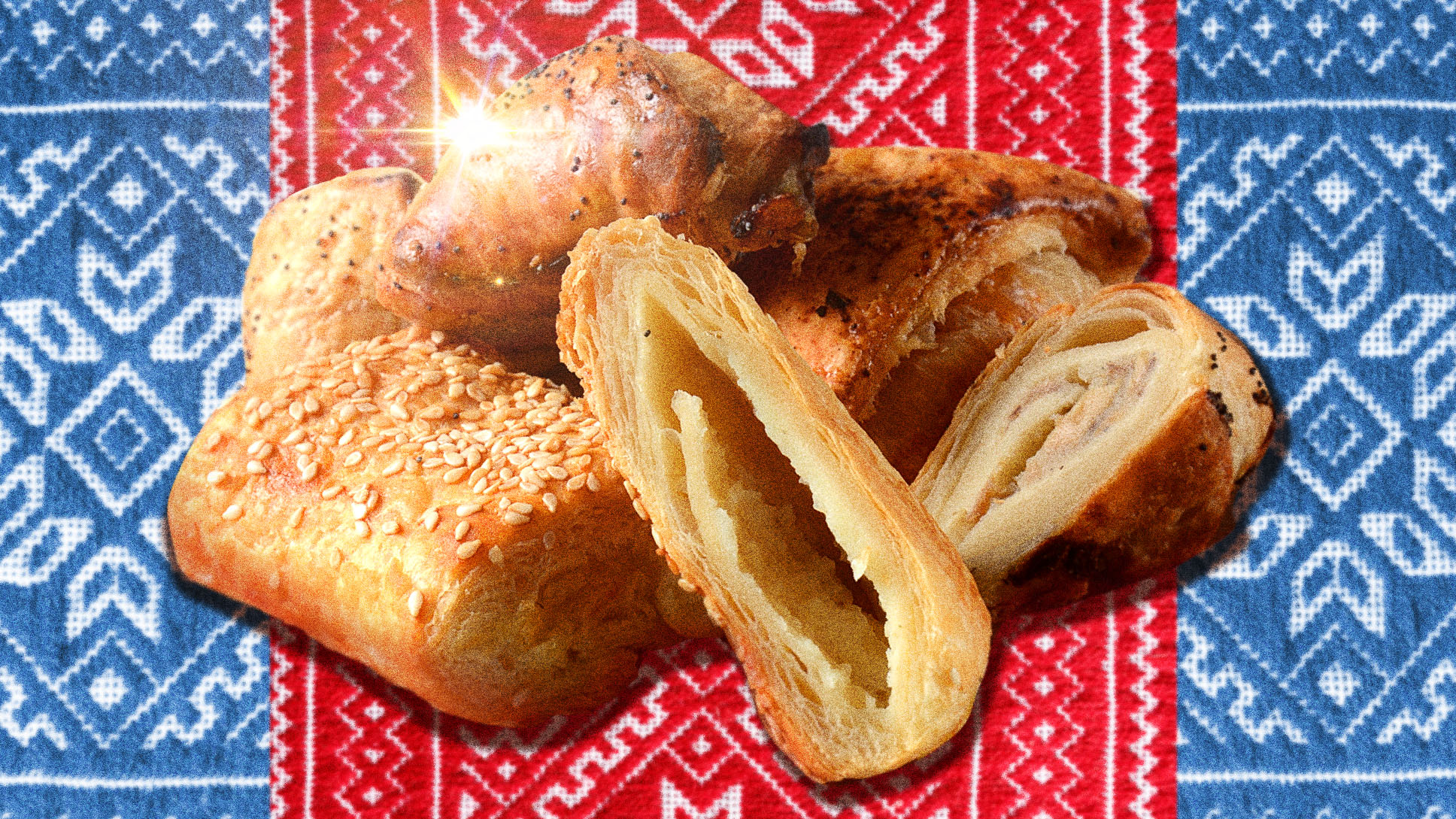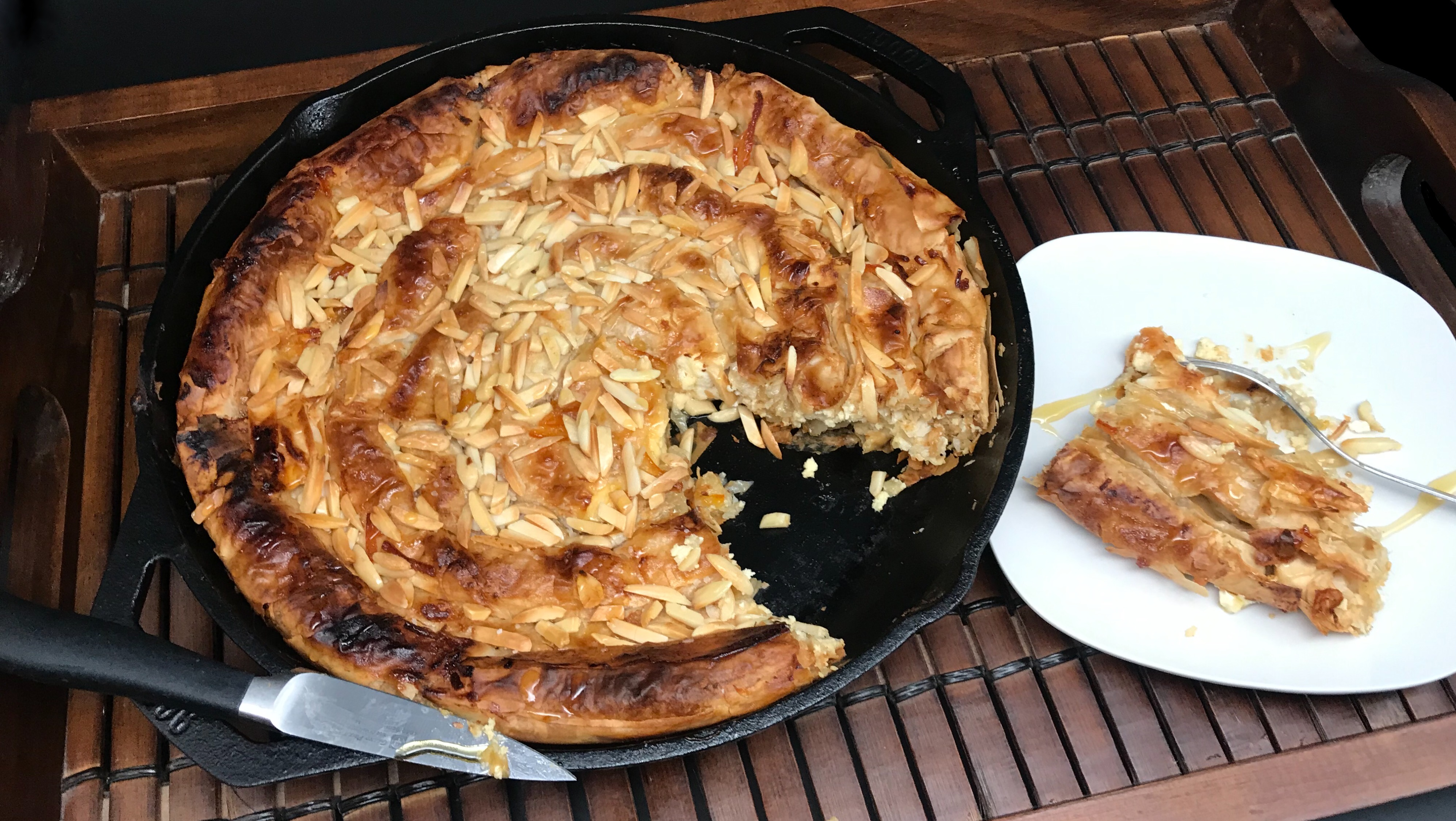Sweet Cheese Börek Will Teach You To Wrangle Phyllo And Keep The Faith
If you've ever attempted a recipe using phyllo dough, it will always include a note along the lines of, "Keep the phyllo covered at all times with a damp towel to keep it from drying out." It's a good note, because it's true! Frozen phyllo dough can be convenient, but if it dries out just a tiny bit, it can be a nightmare. Phyllo demands precision. Phyllo demands to exist in a perfect world. And when have you ever known real life to be perfect?
I've had many a "failure" working with phyllo dough, and I can trace each failure to one of three different scenarios:
1. The phyllo dough that comes out of the box is complete garbage. Perhaps it was accidentally thawed and refrozen at the supermarket, or damaged at the phyllo factory, or got crushed at the bottom of a bag of groceries.
2. Right before I start cooking I realize I forgot to thaw the phyllo dough, perform any number of ill-conceived "hacks" to speed up the process, and make a bigger mess of things.
3. While I'm cooking I'll get distracted by the phone/laundry/kids/cats/etc., meaning I end up not working fast enough for the phyllo dough's liking, and it chooses to punish me.
I have let none of these hurdles stop me from working with phyllo dough. In fact, I now walk into the kitchen fully expecting that something will probably go wrong. If it doesn't, it's a nice surprise! If it does, it's not the end of the world. We keep going, and we do so knowing that no matter what the end result is, it will most certainly taste good.
I'm particularly fond of a Turkish/Slavic dish called börek, where a thin dough (like phyllo) is wrapped around a sweet or savory filling, curled into a spiral, and baked to a beautiful golden brown crisp. On paper, it seems easy to make; in reality, if you're not accustomed to working with phyllo, a lot can go wrong. The most common pitfall I've encountered is the dough stubbornly sticking and cracking as you work with it, something that is bound to happen if you're working slowly as you become comfortable with the process. To get around this, I suggest working with your phyllo on a piece of parchment or, even better, a well-buttered sheet of nonstick aluminum foil. Instead of tearing at the dough with your fingers in an attempt to roll it up, you can lift up the foil to assist you with the motions. If the dough still tears and cracks here and there, do not fret—you can always patch it up with another piece of broken dough, brushed with a bit of butter to make a delectable, edible duct tape.
I've also taken to lining the bottom of my pan with scraps of phyllo and melted butter like papier-mâché, because every package of phyllo I have ever opened leads off with a few broken, mangled pieces, and I hate throwing them out. I also love love love crispy, buttery phyllo, so what's the harm of having a few extra layers of the stuff? Plus, in the event you get a bit of seepage here and there, you've got a nice firm base that will support your börek and make it easier to serve.
Don't stress yourself out over making your first börek perfect—try your best and enjoy the result, no matter what it looks like when it comes out of the oven. Once you get comfortable with the motions you'll be able to move faster, and once you move faster, you'll have fewer hiccups with the phyllo. The filling in this recipe is a very simple sweetened ricotta, which I personally like to flavor with honey and vanilla to taste. Feel free to experiment here once you've gotten the hang of the process! You can add a bit of cinnamon if you'd like a cannoli filling, some ground up pistachios, or some miniature chocolate chips. You can experiment with other fillings, like the ones you use for your favorite fruit pies, or savory combinations of ground meat and vegetables. With enough practice, you'll find that making börek really is a simple process, as long as you keep the faith.

Sweet Cheese Börek
- 3 1/2 cups ricotta
- 1/2 cup powdered sugar
- 1/3 cup honey
- 1 1/2 tsp. vanilla
- 2 eggs
- 2 sticks butter
- 2/3 cup orange marmalade
- 1 box frozen phyllo dough, thawed
- 1/2 cup slivered almonds, optional
In a large bowl, whisk together the ricotta, powdered sugar, honey, vanilla, and eggs until well combined.
Move a rack to the lowest part of the oven, and preheat to 400 degrees. Lay an 18" long piece of nonstick foil or parchment on the counter. Cut a 2 Tbsp. nub of butter and grease the foil; use the rest of the nub to generously butter a 10" cake pan or cast iron skillet. Unwrap the phyllo and keep it covered with a damp towel.
In a small saucepan or the microwave, melt together the remaining butter and the orange marmalade; stir well. Use the broken, messy pieces of phyllo to line the bottom of the skillet/cake pan, brushing them with melted butter as if you were doing papier-mâché. (You don't want to make the bottom crust too thick, but you can add three or four layers if you've got a lot of misfit dough.)
Lay out a sheet of phyllo horizontally on the greased foil. Brush well with the melted butter mixture, lay another piece of phyllo on top, and brush again. About 2" from the bottom of the dough, dollop a 1" thick line of cheese with a tablespoon, stopping about an inch from the sides. Roll the phyllo up into a log (using the foil to assist), lightly pinch the edges, and lay the log in the pan, starting from the outer edge. Brush well on all sides with the melted butter mixture. Repeat the process of making these cheese-filled phyllo logs until the entire pan is full.
Note: If you run out of the marmalade butter too early, perhaps because of overzealous buttering, just make yourself a bit more by using two parts butter to one part marmalade. No big whoop.
Bake the börek for 45 minutes. Brush the top with the rest of the melted butter mixture, and scatter the almonds over the top, if using. Return to the top shelf of the oven and bake for another 10-15 minutes or so, until golden brown. Serve immediately or at room temperature.

